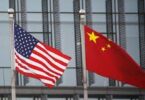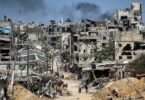Ashok Swain
What is peace? Is it just the absence of war? If countries not fighting a war is peace, then the world is now more peaceful than ever. In recent decades, a country other than the US has rarely waged war against another country. The troops of the US and Russia have not fought against each other for over a hundred years. India and Pakistan have not gone to a big war for more than half a century. If the world is that peaceful, why do countries feel so insecure, amass weapons, and spend so many resources on their armed forces?
The world is spending almost two trillion dollars on military annually, and the amount it spent on armed forces in 2020 was nearly 10% higher than the amount in 2011. The American Congress has approved the military expenditure of $768 billion for 2022, the biggest defence spending bill in the country’s history. Other big countries are big spenders also.
Peace does not belong to countries exclusively or in the context of the war only. Countries are not fighting that many wars, but the threats of war have not disappeared. It is too early to predict that the decline in the number of wars is permanent, and the wars have also become deadlier when they are being fought.
Most nuclear-armed countries reduce the number of their nuclear weapons but make them more lethal than before. The last century had witnessed two World Wars, but in this century, if another World War gets fought, there will be no one left on this planet to fight another war. The nature of war is also changing fast. Digital attacks are often carried out on a limited and controlled scale by the disputing countries.
Still, a full-scale cyberwar between enemy countries can cause comparable harm or more to any full-scale traditional war. Moreover, combat in cyberspace is highly unpredictable, difficult to measure, and almost impossible to prevent. Since the beginning of this century, the advent of hybrid warfare has further complicated the distinction between war and peace.
Hybrid warfare integrates cyberspace into warfighting. It combines conventional and non-conventional forces and tactics and brings non-state actors to play a critical role while waging and engaging in wars. The wars are no longer confined to or controlled by countries and are planned and fought only by armed forces. Those who refused to see the larger picture and still tend to measure peace in the context of war, the changing nature, and the actors of the warfare have even forced them to rethink their definition of peace. Moreover, peace is not just the absence of war.
In 2014, the then UN Secretary-General Ban Ki-moon said, “We know that peace cannot be decreed solely through treaties — it must be nurtured through the dignity, rights, and capacities of every man and woman.’ Peace is not for nations only; it is primarily about people.
Peace is both negative — the absence of war, and positive — the absence of the causes of war. Peace is both external as well as internal, and they are interdependent. Internal peace is the core foundation of a country to act and promote peace with others. In contrast, external peace allows the country to work for internal peace by focusing on providing rights, justice, and equal opportunities to its people.
The new globalised world has created an environment that fosters new challenges to countries in striving for external peace and internal peace.
The unconventional threats like climate change, environmental scarcity, large-scale human migration, food and water scarcity, loss of biodiversity, and increasing pandemics have posed serious challenges for the countries to achieve both external and internal peace. These non-military threats are also interrelated, and a threat to one country or region has often become a threat to all.
Peace is almost impossible to localise in this globalised world. The new threats to an inclusive idea of peace have made the world, irrespective of strong or weak, rich or poor, East or West, North or South, mutually vulnerable. The increasingly ambiguous and inclusive nature of measuring peace is now unavoidable.
The world and its problems have become too complex and too diffusive, demanding a more exhaustive approach to deal with those challenges.
Finding an inclusive approach to work for peace has become a necessity as maintaining security through nuclear deterrence has lost most of its significance. No one denies the presence of threats to peace through interstate wars. But the new reality presents numerous other and more complicated challenges. The newly emerging threats are not conventionally armed in nature but have a global reach with severe consequences. The challenge for the countries is to forge a new sustainable and people-centric peace architecture that is both effective and inclusive in dealing with the complex challenges to global peace in the twenty-first century.






